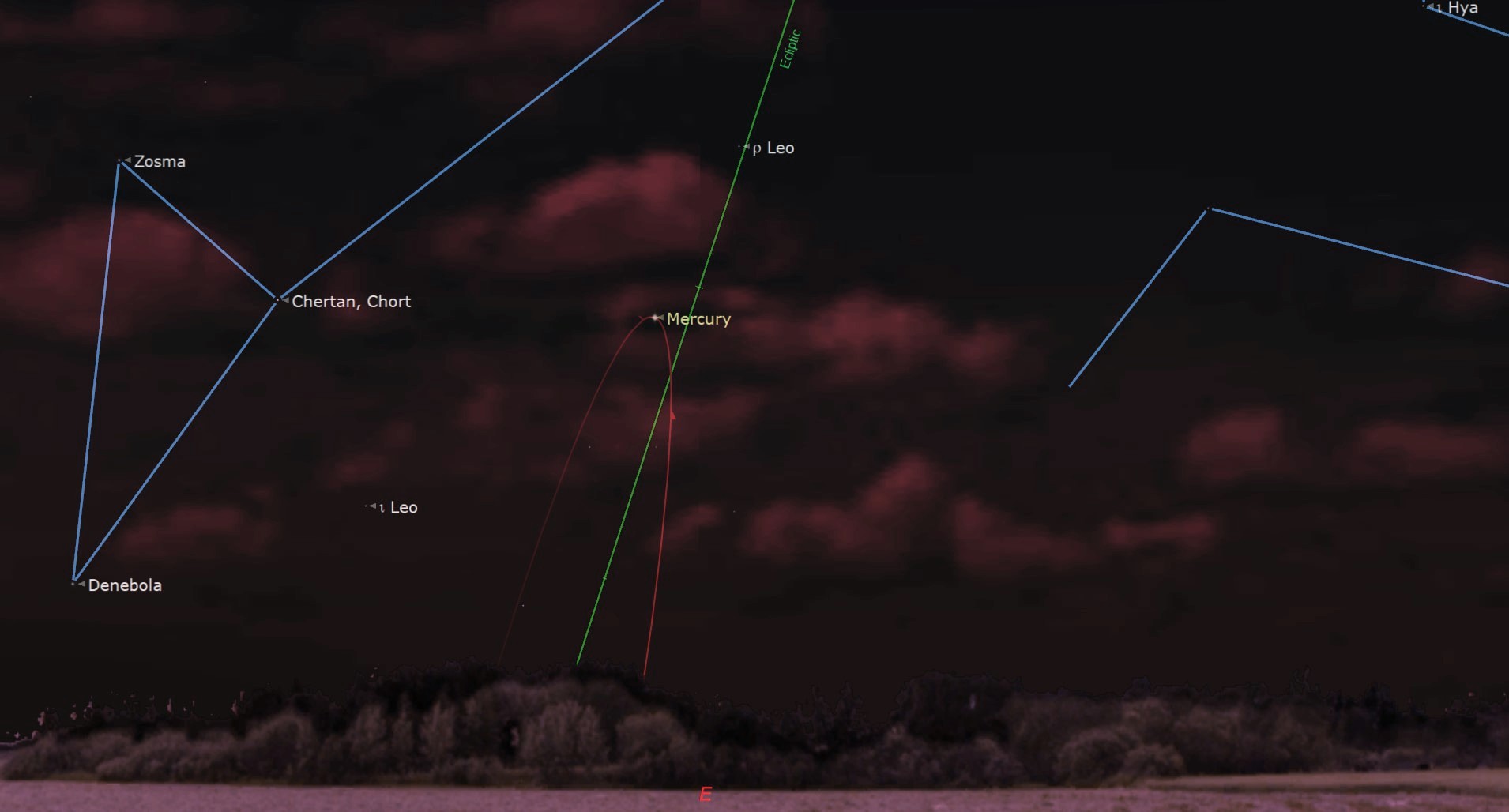See Mercury reach its highest point in the morning sky early on Sept. 23
As temperatures fall, Mercury rises this weekend.

The planet Mercury reaches its highest point in the sky on Saturday morning (Sept. 23).
The closest planet to the sun, Mercury is also the solar system's smallest world. This means even when it is at its highest in the sky during its September to October morning apparition and shining brightly, the planet will be a tough spot for some amateur astronomers depending on their location. While the planet will be fairly bright at a magnitude of -0.5, with the minus prefix indicating a particularly bright object over Earth, it will still be low to the horizon.
From New York City, Mercury will rise on Saturday (Sept. 23) at around 6 a.m. EDT (1000 GMT), and the planet will reach 16 degrees over the horizon — its highest point in the sky — culminating at around 11:43 EDT (1542 GMT), according to In the Sky. The tiny planet will then set in the afternoon at around 6:13 p.m. EDT (2213 GMT).
To see it, look to the east an hour before the sun rises to find a yellowish Mercury between the back legs of Leo, the lion. To see it, you'll need a clear, unobstructed view of the horizon. But be careful! Be sure to be aware of the time the sun rises in your location and take precautions to never point any optics in the direction of the rising sun.
Related: Night sky, September 2023: What you can see tonight [maps]

Want to see the planets of the solar system in the night sky? We recommend the Celestron Astro Fi 102 as the top pick in our best beginner's telescope guide.
As the closest planet to the sun in the solar system, Mercury is usually too washed out by the light from our star to be seen. The only times the planet is really visible from Earth and the periods when it reaches its largest separation from the sun — known as greatest elongation. This happens during points in the 88-Earth-day orbit of Mercury around the sun when the tiny planet passes between Earth and our star, something that occurs roughly every 116 days — referred to as Mercury's synodic period — and then speeds ahead of our planet in its more leisurely 365-day orbit.
When Mercury is visible, this is referred to as a period of apparition and lasts a few weeks. The apparitions of Mercury can occur in the evening or, as is currently the case, in the mornings. The timing of the apparition of Mercury depends on which side of the sun the planet is on as it approaches, reaches, and recedes from its greatest elongation.
Get the Space.com Newsletter
Breaking space news, the latest updates on rocket launches, skywatching events and more!
If Mercury is to the east of the sun, it rises and sets a short time after the sun, making it visible in the later afternoon/evening and leading to its evening apparition. If it is to the west of the sun, then Mercury rises and sets before the sun during its morning apparition phase. These apparitions occur alternatively.
During evening apparitions, depending on the time of the year at which they occur, Mercury climbs to between 9 degrees and 21 degrees above the horizon at sunset. Again, depending on the time of the year, during morning apparitions, Mercury reaches between 11 degrees and 19 degrees over the horizon at sunrise.
The current phase of Mercury's morning apparitions kicked off on Sept. 6, 2023, when it first passed between Earth and the sun — a position astronomers call an inferior conjunction — and will last well into Oct, according to Earth Sky.
Want to check out Mercury in the early morning sky? See our guides on the best telescopes, the best binoculars, and the best telescopes for seeing planets.
And if you're looking to take awesome photos of Mercury or the night sky in general, check out our guide on how to photograph the planets, as well as our best cameras for astrophotography and best lenses for astrophotography.
Editor's Note: If you snap an image of Mercury and would like to share it with Space.com's readers, send your photo(s), comments, and your name and location to spacephotos@space.com.
Join our Space Forums to keep talking space on the latest missions, night sky and more! And if you have a news tip, correction or comment, let us know at: community@space.com.

Robert Lea is a science journalist in the U.K. whose articles have been published in Physics World, New Scientist, Astronomy Magazine, All About Space, Newsweek and ZME Science. He also writes about science communication for Elsevier and the European Journal of Physics. Rob holds a bachelor of science degree in physics and astronomy from the U.K.’s Open University. Follow him on Twitter @sciencef1rst.









